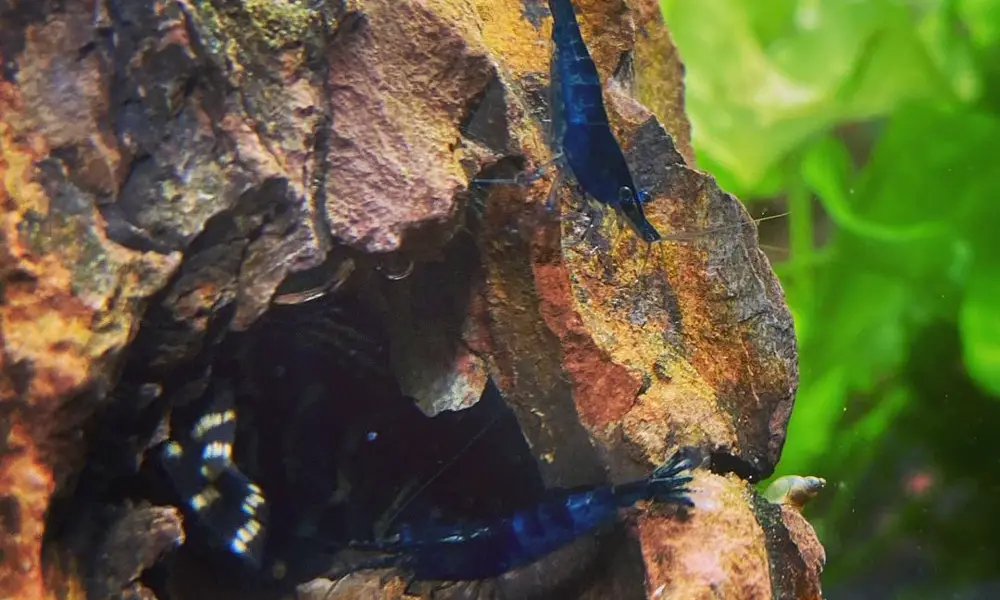Keeping an aquarium is no easy task, especially because you need to pay close attention to every minute detail.
Nonetheless, selecting a good aquascape can seem like a daunting task. That’s why we’ve put together this handy little guide to acquaint you with the essential knowledge about a dragon stone aquarium.
This type of aquarium is dominated by dragon stones, which are used as an integral functional accessory. Want to know more? Let’s dive right into the details then.
What Is Dragon Stone Aquarium?

A dragon stone is a sedimentary rock, named so for its peculiar scaly texture resembling a dragon’s skin. So, a dragon stone aquarium is essentially dominated by these stones, often leading people to believe that it is artificial in origin, but that’s not true.
In reality, it is a natural and lightweight aquascaping rock composed of silt minerals, clay, and organic matter coalesced together as a result of high-pressure waves. Furthermore, its surface has numerous ridges and crevices of different depths that make it look like driftwood or petrified wood, and a hot pick among aquarists.
These small holes are formed in young dragon stones when sediments are driven into their soft sections. They also chip away loose particulate matter, leaving crude marks on the surface, while the hard sections stay intact.
Moreover, as more clay and microorganisms accumulate, the sun hardens the rocks and alters their color. They are either olive green or brown, depending on the ratio of organic matter to clay content.
Is Dragon Stone Safe For Aquarium?
As long as you clean and anchor a dragon stone properly, it is completely safe to be kept in an aquarium. But that doesn’t negate the fact that these stones are quite fragile due to their porous build.
Therefore, you should make a note of cleaning them gently, without rough-housing or dropping them. It is also advisable to wear protective gloves and goggles while doing so to prevent any casualties.
In addition, a high-pressure water pump can erode the hardscapes of the dragon stone, thereby causing damage to your setup. It is also susceptible to algae, dirt, and other organic matter and requires frequent, thorough cleaning as the debris alters the chemistry of the tank.
Thus, you can say it is a slightly high-maintenance aquascape but looks extremely beautiful in the tank.
The Hidden Benefits Of Dragon Stone In The Aquarium

Although dragon stone requires extra care and maintenance, it has several hidden benefits, which we’ll now discuss.
Inert Properties (Does Not Affect Water Chemistry)
Dragon stones are inert by nature and do not shed or disintegrate in the tank unless kept in very high water pressure. Unlike corals or limestones, they have a neutral pH and won’t affect the concentration of hydrogen ions in the tank water.
You can even keep these little rocks in a pH-sensitive planted aquarium or a freshwater setup without any worries. The only thing is that they can easily collect debris on their indented surface.
In other words, a dragon stone won’t affect the water pH on its own, but the sediments caught inside it can create trouble. Still, it’s not a big deal if you are an active hobbyist and clean your aquarium regularly.
Aesthetic Beauty
Moving on, dragon stones are very beautiful and aesthetically pleasing, all thanks to their unique structure and colors. They come in different shapes and sizes so that you can create your own mixture and assemble them in your aquarium however you like.
Despite the sturdy look, they are lightweight due to their clayey composition, which makes them ideal for sanding and carving. So, if you aren’t happy with how a stone looks, you can chisel the large chunk according to your wish.
Provides Hiding Places For Shrimp And Nano Fish
Like lava rock, the scaly structure of a dragon stone is not only beautiful to look at but is also of practical application. Its several nooks and crannies serve as perfect hiding spots for small tank creatures like shrimps, snails, and nano fish. Since the holes vary in size, they can accommodate tank mates of different shapes and lengths.
In addition to that, slightly bigger fish can hide behind the structures and stay safe from other aggressive fish. Dragon stones are also commonly used for creating hardscape setups to provide tank dwellers with hideout spaces to explore and relax.
Some shy fish like bettas benefit from such setups as they stimulate them and act as a stress reducer.
Great For Anchoring Plants And Mosses
These stones are also great anchors for plants and mosses as the pores provide a lot of surface area for plant roots to anchor. The roots can latch onto the crevices and feed off the organic material present inside them. As a result, more plants will take up roots and make the vegetation of the aquarium richer.
Plant roots also act as anchoring units, keeping the rocks together and preventing them from chipping. This ultimately makes the landscaping of your tank greener and better. Plus, your water pets will love you for the increased oxygen supply and hiding spots.
The Hidden Dangers Of Dragon Stone In The Aquarium
While dragon stones have a number of beneficial qualities, they also may lead to a few dangers and need to be set up after taking the necessary precautions.
Small Fish Get Stuck In The Hole
Since the pores are big enough for fish to hide inside, they may also trap them at times. Small creatures often get overwhelmed and lose their way inside the stones. Therefore, you need to be careful and pick rocks that have large enough holes for your small tank creatures to move around easily.
Prone To Crumbling Easily
As we already discussed, dragon stones are essentially big lumps of sediments and clay clubbed together. That’s why they can chip and crumble very easily, which might scare off your water pets.
To prevent this, conducting a crumble test every now and then is a prudent idea. It’s very easy to do and will help you rest easy, knowing that your stones are going to stay intact. Simply soak the rocks in a vessel containing water from your fish tank for twenty-four hours.
If the dragon stones maintain their original shape, they are safe to be submerged in the water tank.
How To Prepare & Clean Dragon Stone For Aquarium
A dirty dragon stone can leech harmful compounds into the tank, consequently altering its pH and visibly changing the water color. That said, here’s how you can prepare and properly clean your dragon stones before placing them in the aquarium.
Start by rinsing the rocks thoroughly in a bucket full of cool water to free them from superficial dirt and organic matter. Then, wash them carefully to remove the debris from the holes using a water hose set to a medium level of pressure.
In case all the dirt doesn’t come off, gently poke out lodged material using a wooden skewer or a soft toothpick. Continue rinsing until the water runs clear of all sediments and other compounds.
It’s worth mentioning that treating dragon stones with hard chemical cleaners is a bad idea as they can seep into the pores and stay there, ultimately increasing the pH of the tank water and making it more basic. However, you can sterilize them with diluted bleach or hydrogen peroxide solution to get rid of harmful microscopic organisms.
Once you’re done with the cleaning, fill up a container with nine parts water and one part bleach. Then, soak the stones in this solution for 10-20 minutes, and later rinse them thoroughly with tap water. Lastly, keep your dragon rocks in dechlorinated water for around twenty hours before finally placing them in the tank.
Where To Buy Dragon Stone Aquarium
Dragon stones are pretty easily available in local fish and aquarium stores, so you can walk right in and get some for yourself. Or, if you simply want to purchase them from the comfort of your home, they are available in various online stores too. You can look for them on Amazon, LiveAquaria, and FlipAquatics.
Final Thoughts
Deciding what types of plants, stones, and aquascapes you want to keep in your tank can be an overwhelming task, let alone designing the whole layout. That’s why it’s only natural if you had your doubts about dragon stones.
Having read our guide, we’re hoping that you found some clarity on the matter. These stones are great for landscaping your aquarium, increasing safe spots for your fish, and adding some rustic aesthetic appeal to your tank.
However, they do need thorough cleaning and extra care, so be prepared for that. Overall, we’d suggest placing the dragon stones in your tank because they have a lot of benefits and are easily available.
